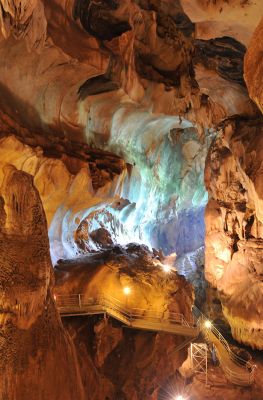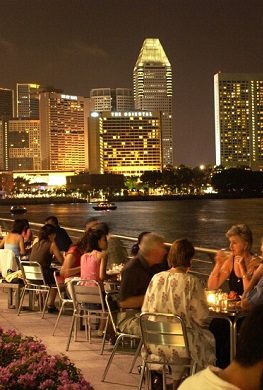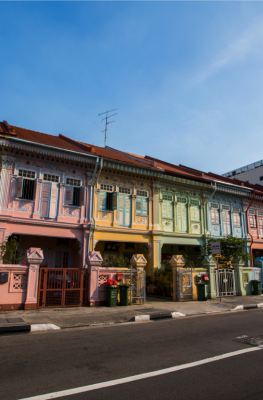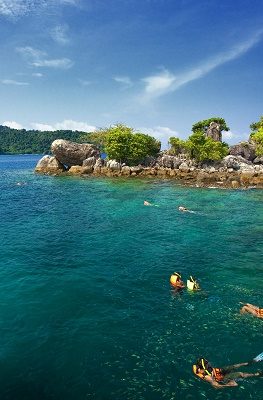Published on November 7, 2017
Houses in Kampong Ayer, Brunei. Image courtesy of Brunei Tourism.
“Authentic” remains a potent buzzword for travelers to Southeast Asia. Much-abused by tour brochures, and somewhat hard to find at stops along the famous “banana pancake trail” beloved by Western backpackers, authentic local experiences can be maddeningly elusive… until you go well off the beaten path.
We asked three bloggers to tell us about the best local experience they’ve encountered around the region. You’ll need to leave the company of backpackers in these parts, and trust your well-being to the locals.
Book a homestay to better experience the local way of life – then wander around to take in these unmistakably authentic sights.
Girls in Kampong Ayer, Brunei. Image courtesy of Brunei Tourism.
Visiting Kampong Ayer in Brunei
Brunei blogger Maurina Hamid tells us a surprising fact about the Kampong Ayer water village in her home country: residences in Kampong Ayer tend to be cramped, as “each house actually is home to several families,” Maurina tells us. “It’s very common in Brunei for families to live together, even when you have kids; you have cousins growing up as brothers and sisters and it’s very close knit.”
Visitors to Kampong Ayer can look at the ingenious ways that residents have adapted to living on top of the water – “[it’s] not that much different from how it is on land, really,” Maurina says. “Simple things like riding the boat to work, as opposed to a car.”
Enterprising Kampong Ayer families have turned their location to their advantage: “Some families actually turn the water facing part into a restaurant,” she confides.
A walking tour of Kampong Ayer is often packaged as part of a boat trip around the parts of Bandar Seri Begawan facing the river and bay. “Tourists get a lovely boat tour, operated by locals – they bring u to see the Palace from the water,” Maurina explains. “Then they bring u to see Mirror Island – as you enter Brunei Bay, it reflects the sun like a mirror.”
- Find out more about Kampong Ayer in Brunei, or try this itinerary that reaches into Brunei, Malaysia (via the state of Sabah) and the Philippines.
Cecil Street Market in Penang, Malaysia. Image courtesy of Mike Aquino.
Morning Markets in Penang, Malaysia
To see locals living their daily lives authentically, visit the local market – there’s little room for pretense and glitz amidst locals hawking raw fish and street food.
Timothy Tye of Penang Travel Tips tells us that his hometown Penang in Malaysia scores highly in this area: “Walk through the morning markets in Penang, in places such as Chowrasta Market, Jelutong Market or Pulau Tikus Market,” he explains. “Each offers its own experience.”
Cecil Street Market, Timothy says, “has a large mix of hawker stalls selling all sorts of local food… they can see various types of local delicacies being sold which they would not find back home.”
As for his personal choice, “I usually go to Jelutong Market,” Timothy confides. “It has a mix of stalls by Chinese, Malay and Indian hawkers, so there’s lots to see.”
Penang is one of Malaysia’s most popular cultural centers; visit it in this itinerary that cruises down the historic Malacca Strait.
Monk wearing sak yant tattoo in Thailand. Image courtesy of Evo Terra/Creative Commons.
Sak Yant Tattoos in Thailand
Getting ink done has trended hard and fast among visitors to Southeast Asia as of late, but traveler and blogger Ian Ord was way ahead of the curve. “I got my sak yant in 2012,” Ian explains. “My brother Taylor came over to Thailand for a month – it was actually him who originally researched them and suggested we get one.”
Locals believe the tattoos confer a personalized protection that the ajarn (sak yant tattoo artist) can design around the client’s own fears and concerns.
“Traditionally you visit an ajarn with a purpose,” Ian explains. “You would tell them about your values – your passions, your life goals, challenges you face and fears you may have – and through this consultation, your ajarn can suggest a yantra protection which is custom tailored to your own personal needs.”
After you and the ajarn agree on a design, traditional prayers and blessings ensue before the ajarn begins the process. “The ajarn will… begin tapping the yantra onto your skin with a long pointed rod dipped in a homemade concoction of herbal ink,” he says. “After the yantra is complete, you will get another blessing done by the ajarn as he pushes the magic into your yantra, sealing the enchantment into it.”
While the sak yant has always been popular with locals, foreigners will find little hindrance to getting one on their own in Thailand. “You don’t have to be Thai or Buddhist to get one, though you should be respectful of all the practices,” Ian says. “Having a translator present is important for this facilitation if you can’t speak Thai yourself, for instance.”
- For more adventures in and around Bangkok, explore the Thai capital’s markets, or explore these itineraries that cover the region’s rivers and seashores, or one that constitutes a cultural grand tour through three countries.
Illustrated shophouse wall in Kampong Glam, Singapore. Image courtesy of the Singapore Tourism Board.
Looking for more local experiences in the rest of the region? Here are two more you might want to consider:
Singapore’s cultural precincts represent the small island-nation’s multiple ethnicities: the Chinese, Indian, and Malay neighborhoods of Chinatown, Little India and Kampong Glam respectively feature each culture’s food, business and leisure activities, staged from shophouses dating back as far as the 19th century.
Read the official Singapore Tourism Board page on Singapore’s cultural precincts for more information on what to see, do (and most specially, eat) in each of these neighborhoods.
Myanmar’s iconic Shwedagon Pagoda in the former capital Yangon is not only a golden landmark seen from almost everywhere in the city; it’s a cultural touchstone for locals, who visit the 98-metre-high golden spire to pray for success and give thanks for their lot in life.
To experience Shwedagon like a local, go with a guide and get your fortune taken at one of the stalls in the stairs ascending to the main platform; walk around the spire in a clockwise direction, and pour water over a statue corresponding to your birthday – the guide will interpret your fortune and point the correct statue to water.
* * * *
Read Maurina Hamid’s blog, or follow her on Facebook and Instagram.
Timothy Tye blogs at Tim’s Encyclopedia. you can follow his adventures on his Facebook page.
Ian Ord is one of several travelers managing Where Sidewalks End; follow this site on Facebook, Twitter and Instagram.






